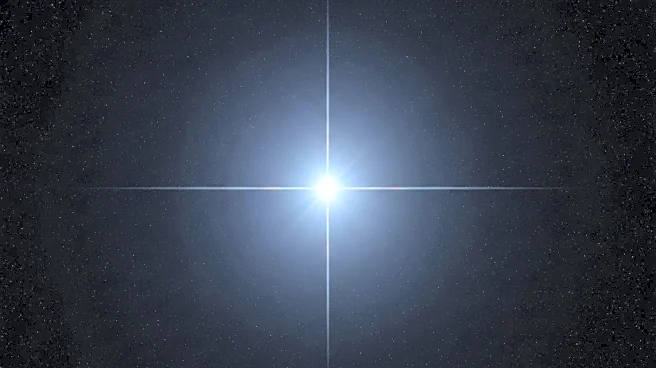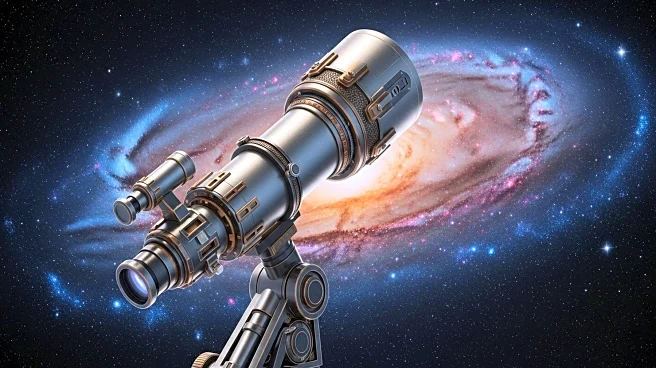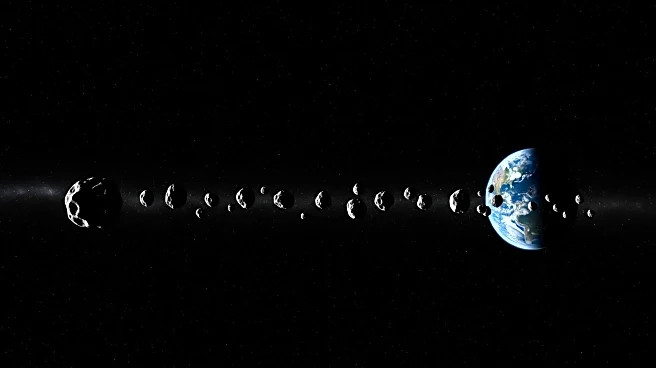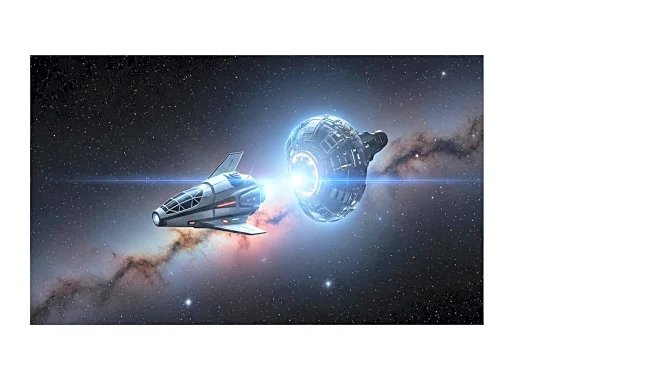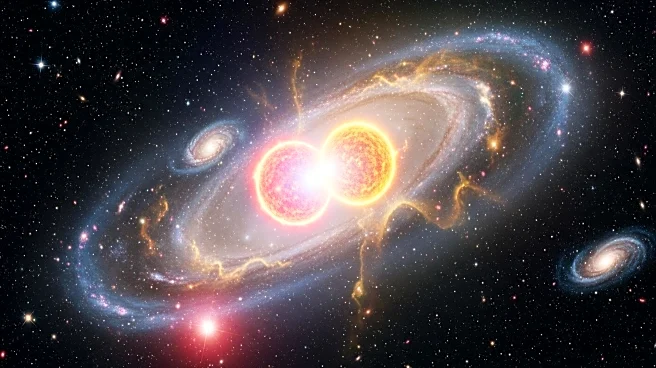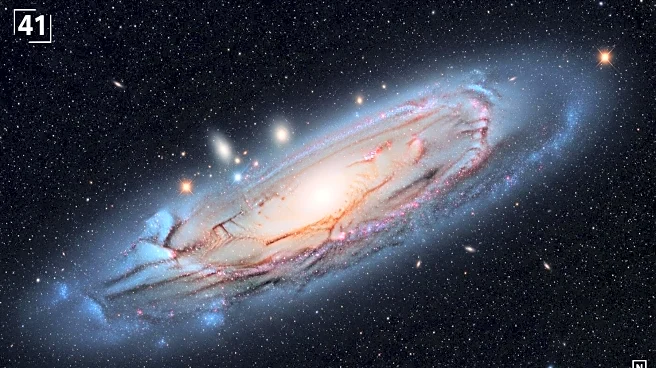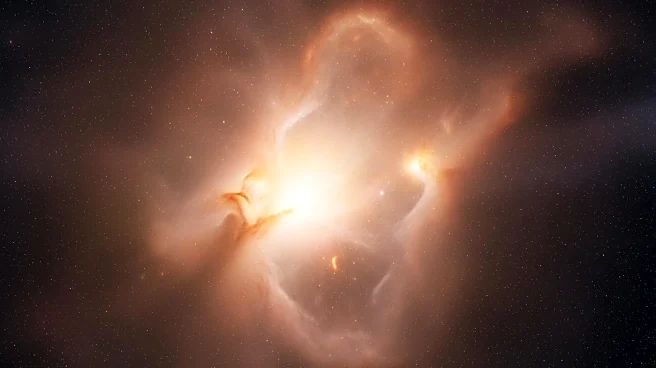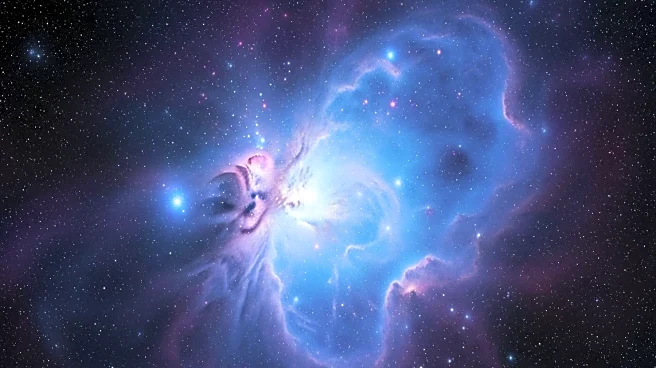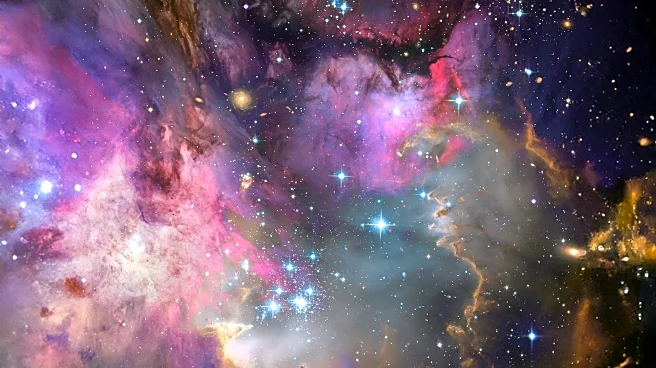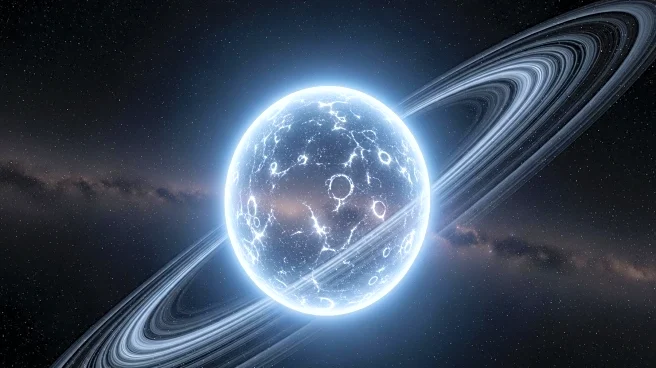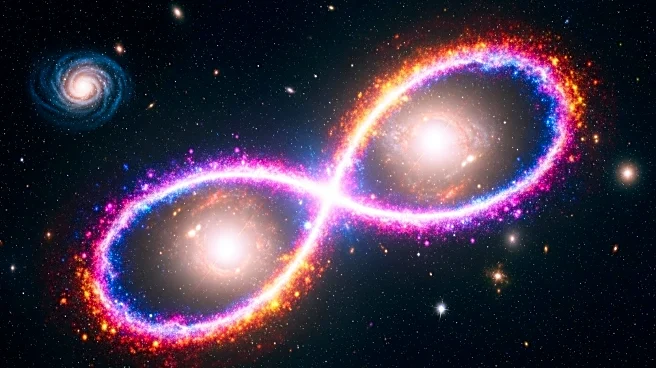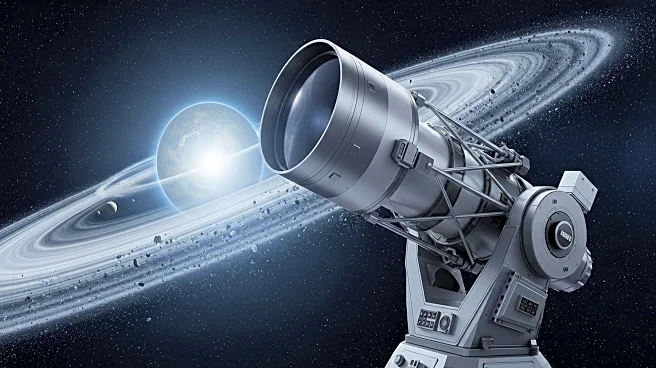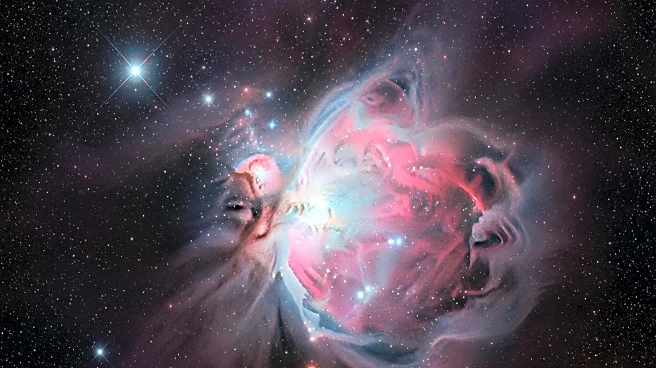What is the story about?
What's Happening?
Astronomers have identified a star in the Large Magellanic Cloud, named SDSS J0715-7334, which exhibits an exceptionally low presence of heavy elements, suggesting it may be a direct descendant of the universe's earliest stars. This star, located in a satellite galaxy of the Milky Way, has a metal content of about 0.8 parts per million, significantly lower than that of our sun. The discovery was made by Alexander Ji and his colleagues at the University of Chicago, who first noticed the star's unusual low metallicity in data from the Sloan Digital Sky Survey. Subsequent observations with the Magellan telescope at Las Campanas Observatory in Chile confirmed the star's low levels of iron and carbon, distinguishing it from other nearly pristine stars typically found in the Milky Way.
Why It's Important?
The discovery of SDSS J0715-7334 provides valuable insights into the formation and evolution of stars in the early universe. Understanding the composition and characteristics of such pristine stars can help astronomers trace the history of stellar formation and the distribution of elements across galaxies. This star's unique lack of carbon, compared to other nearly pristine stars, raises questions about the cooling processes and environmental conditions in different parts of the universe during its early stages. The findings could lead to a deeper understanding of cosmic evolution and the mechanisms that govern star formation in various galactic environments.
What's Next?
Further research is needed to explore the cooling mechanisms and environmental factors that allowed SDSS J0715-7334 to form with such low levels of heavy elements. Astronomers may conduct additional observations and simulations to investigate the role of cosmic dust and other factors in the star's formation. These studies could provide new insights into the diversity of star formation processes in different regions of the universe and contribute to a broader understanding of cosmic history.
Beyond the Headlines
The discovery of SDSS J0715-7334 challenges existing theories about star formation and the role of heavy elements in cooling processes. It suggests that different regions of the universe may have unique conditions that influence the formation of stars, potentially leading to variations in elemental composition. This finding could prompt a reevaluation of current models and theories regarding the early universe and the development of galaxies.
AI Generated Content
Do you find this article useful?
